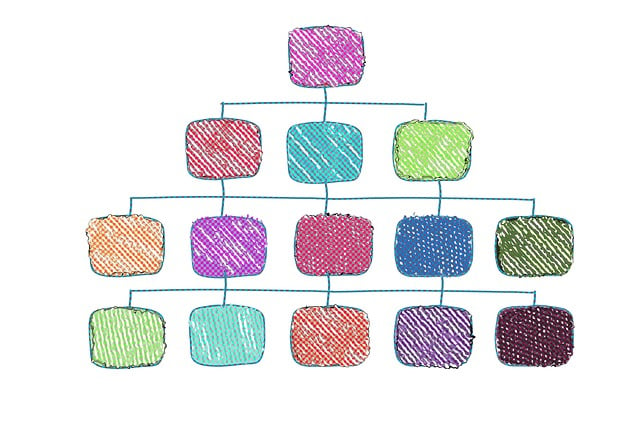In South Africa, understanding how to identify Ponzi schemes is vital for protecting investments. Avoid offers of unusually high and consistent returns with minimal risk. Look out for lack of transparency and high-pressure sales tactics. Verify investment opportunities through financial regulators and transparent financial statements. Diversify your portfolio to spread risk. Stay alert, as these schemes can cause significant financial harm, as seen in recent cases like Mzi Kaba and cryptocurrency scams.
In the complex financial landscape, understanding how to identify a Ponzi scheme is crucial for investors in South Africa. This guide delves into the intricacies of these deceptive schemes, providing insights on ‘How to Recognise a Ponzi Scheme in South Africa’. We explore the basic structure and red flags to look out for, coupled with practical steps to protect yourself. Learn from real-world examples and case studies to ensure you’re equipped to navigate this tricky domain.
- Understanding Ponzi Schemes: The Basics
- Red Flags to Look Out For In South Africa
- Protecting Yourself: Steps to Take
- Real-World Examples and Case Studies
Understanding Ponzi Schemes: The Basics

In South Africa, as in many parts of the world, Ponzi schemes pose a significant risk to investors. Understanding what these schemes entail is the first step in How To Recognise A Ponzi Scheme. A Ponzi scheme is an investment fraud where returns are paid to existing investors from funds contributed by new investors, rather than from any actual profit earned. It’s a pyramid structure that relies on continuous infusions of capital from new investors to pay off older ones. Often, these schemes promise high returns with little or no risk, making them particularly attractive but ultimately deceptive.
To spot a Ponzi scheme in South Africa, be wary of investments that offer unusually high and consistent returns with minimal risk. If an opportunity seems too good to be true, it probably is. Legitimate investments typically have some level of risk and don’t promise unrealistic returns. Always do your research before investing and consider seeking advice from regulated financial advisors who can guide you on safe investment options.
Red Flags to Look Out For In South Africa

When it comes to spotting a Ponzi scheme in South Africa, being vigilant is key to protecting your investments. There are several red flags that investors should look out for to avoid falling victim to these fraudulent schemes. One of the most obvious signs is excessive promises of high returns with little or no risk. If an investment opportunity guarantees unrealistic returns, it’s a significant warning signal. These schemes often lure people in with the prospect of quick and easy money, but the reality is that legitimate investments rarely offer such high returns without substantial risk.
Another crucial indicator is the lack of transparency. Legitimate businesses and investment opportunities provide clear and detailed information about how the money is invested and what it’s used for. If a South African investment scheme avoids sharing this information or appears evasive when questioned, it could be a Ponzi scheme in the making. Additionally, watch out for high-pressure sales tactics and demands for immediate action. Scammers often create a sense of urgency to push people into making quick decisions without proper consideration or due diligence.
Protecting Yourself: Steps to Take

Protecting Yourself From Ponzi Schemes in South Africa
In South Africa, as with anywhere else, it’s crucial to know how to recognise a Ponzi scheme to protect yourself and your hard-earned money. A Ponzi scheme is an investment fraud where returns are paid to existing investors from funds contributed by new investors, rather than from any actual profit earned. This unsustainable model ultimately collapses when there aren’t enough new investors to keep it afloat. To avoid becoming a victim, always verify the legitimacy of any investment opportunity. Check if the company or individual is registered with relevant financial regulators and look for transparent financial statements.
Be wary of high-return investments with low risk, as these are often red flags. Do thorough research on the people or organisations offering the investment, cross-referencing information from multiple sources. Never invest without fully understanding the risks involved and be cautious of pressure tactics or promises of quick returns. It’s also a good idea to diversify your investments to spread risk. By taking these steps, you’ll be better equipped to identify and avoid Ponzi schemes in South Africa, safeguarding your financial future.
Real-World Examples and Case Studies

In South Africa, like many other countries, Ponzi schemes have left a trail of financial devastation. High-pressure sales tactics and promises of extraordinary returns are often used to lure unsuspecting investors. A notable example is the Mzi Kaba scandal, where investors were promised high interest rates on their savings, only for the scheme to collapse, leaving countless victims with substantial losses.
Another case study involves a cryptocurrency Ponzi scheme that duped South Africans into investing in a fake digital currency. The scheme targeted tech-savvy individuals, leveraging the popularity of cryptocurrencies to attract funds. This case highlights the importance of due diligence and understanding the underlying assets before investing, especially in emerging markets where such fraudulent activities thrive.
Understanding how to identify a Ponzi scheme is crucial for protecting your investments in South Africa. By being aware of red flags like unrealistic returns, lack of transparency, and pressure to invest quickly, you can safeguard your financial future. Taking proactive steps to verify claims and diversify your portfolio further reduces risk. Remember, staying informed and vigilant is key to avoiding these deceptive schemes.

